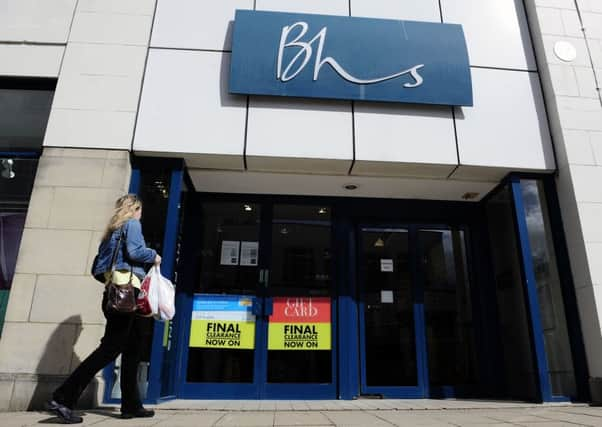Leaders: BHS turns spotlight on pension black holes


THE seemingly sudden collapse of the historic high street chain British Home Stores may have sent shock waves through the retail industry. But the harsh truth of the matter is that industry analysts have long been penning dire warnings about the prospects of the 88-year-old company.
Britain’s biggest retail disaster since the demise of Woolworths eight years ago has unfolded against a grim backdrop of a company struggling to cope with debts of more than £1.3 billion.
Advertisement
Hide AdAdvertisement
Hide AdRetail experts chart its troubles back to the turn of the century and the arrival of a number of new names into the already crowded UK market.
BHS has simply failed to keep pace with the pricing strategies and fashion awareness of rival discount chains like Primark, Zara, H&M, Matalan and TK Maxx.
BHS, whose name is almost certain to disappear from its 164 stores after going into administration, will follow the departure of Woolworths and other long-standing names like C&A and Littlewoods from the retail scene over the past 15 years. It has also become the latest major high street name to collapse leaving huge pension burdens behind.
The writing appeared to be on the wall just over a year ago when the firm was sold by retail tycoon Sir Philip Green for just £1. Serious questions are now being asked over whether he should have to shoulder the burden for the £571 million deficit in BHS’s pension fund, rather than Retail Acquisitions, the consortium of financiers led by racing driver-turned-entrepreneur Dominic Chappell, who has twice been declared bankrupt.
It has quickly become clear that BHS’s pensions deficit has been a major stumbling block hindering eleventh-hour efforts to find a buyer for the retailer. Both Sir Philip and Mr Chappell appear to have serious questions to answer how on earth BHS managed to rack up £1.3bn worth of debts – and what financial position the retailer was in when it changed hands last March.
There is also the issue over whether taxpayers should be left to pick up the bill for the pensions deficit. The Pension Protection Fund has been widely seen as a government-sponsored lifeboat for failed business owners to dump their liabilities in.
The Pensions Regulator, which can use anti-avoidance powers when it believes an employer is trying to dodge its obligations, has already opened an investigation into the collapse of BHS and launched talks with Sir Philip , who is said to have offered £80m to cover some of the costs of the pensions deficit.
While it is laudable taxpayers will effectively ensure that members of the pension scheme will receive most of what they expected there are understandable concerns as to how the gap should be plugged.
Advertisement
Hide AdAdvertisement
Hide AdWhat BHS’s collapse has done is highlight clear gaps in the regulation of what is supposed to be a tightly controlled area. An overhaul seems necessary to ensure avoidance of any costly catastrophes in future.
High anxiety over rescues
Patience would be appear to be running out with some of those taking to Scotland’s most remote and rugged landscapes. The second mountain rescue in the space of a week from Bla Bheinn on the Isle of Skye has provoked some strong words from the authorities. The latter incident involved a lone climber who could not actually identify the peak he was climbing, to the consternation of Skye Mountain Rescue and Police Scotland.
Team leader Gerry Ackroyd said they would have been looking for a “needle in a haystack” had they not recognised his description of the mountain. The Lochaber and Skye Police Twitter feed expressed dismay at another “entirely avoidable” rescue, thanks to a climber without a map relying on Google maps on a phone with no charge.
The Skye incidents have come less than a month after a young woman with a selfie stick had to be rescued from Ben Nevis after getting caught in wintry weather wearing shorts and t-shirt.
If there are any further unhelpful incidents in the Highlands this year it will be no surprise to hear a revival of calls for climbers and hillwalkers to be made to foot the bill for major rescues.
In the past, a series of tragic incidents have led to calls for restrictions to be placed on Scotland’s most dangerous mountains. But it has never been made clear how proposed insurance schemes which supporters believe would help meet the cost of call-outs would actually work in practice.
While there are obvious preparations anyone taking to the hills should take, including wearing suitable clothing and footwear, and taking a map and a GPS device, it is difficult to imagine how the ill-prepared could be prevented from setting off.
What may be much more effective is a high-profile campaign to highlight the dangers of Scotland’s mountains, the folly of relying on mobile phones and the impact that any irresponsible behaviour could have on rescue teams.